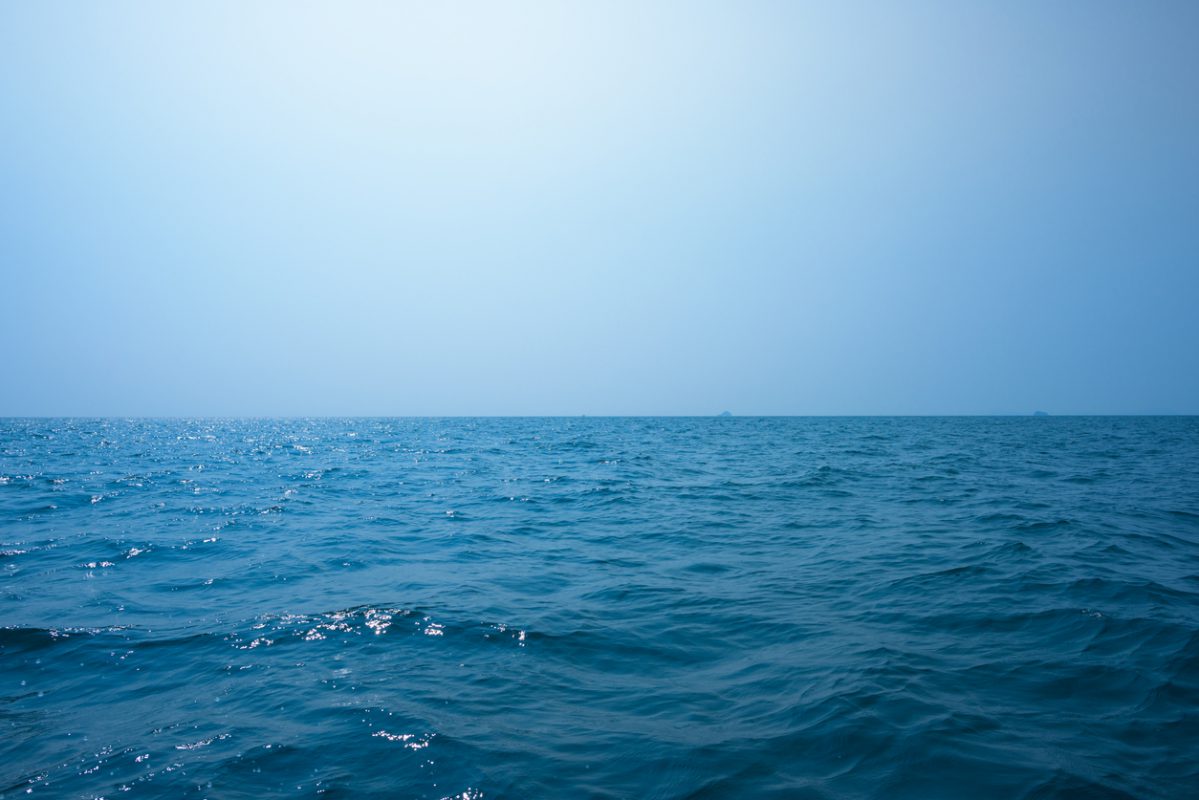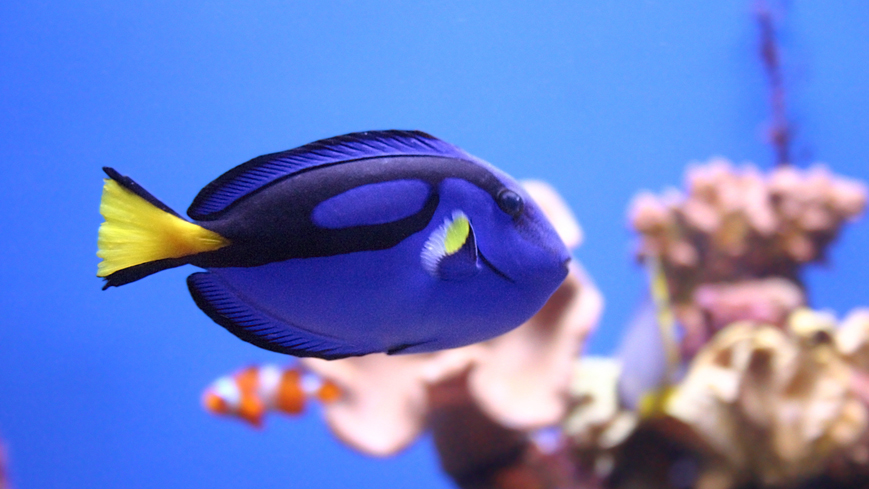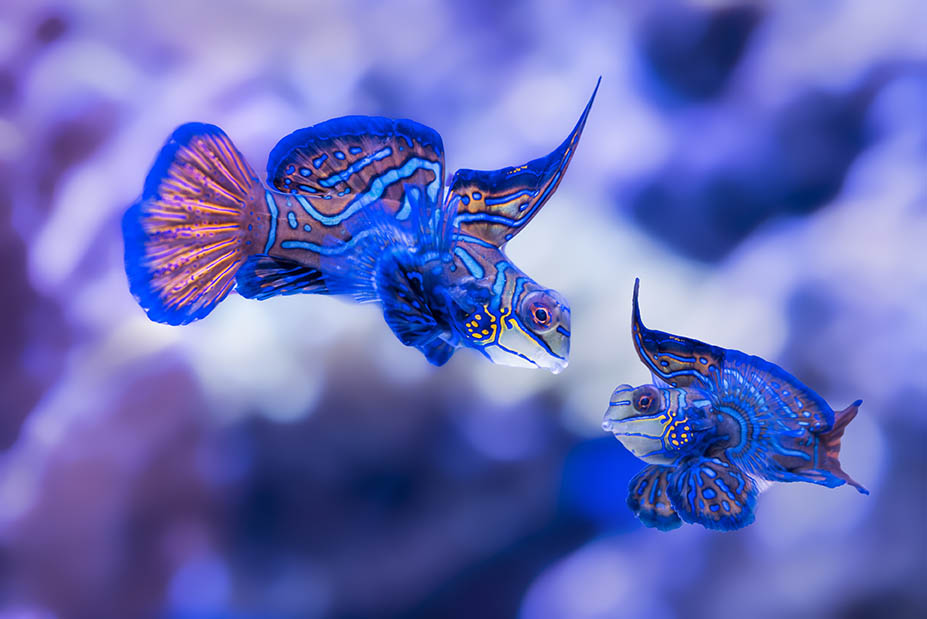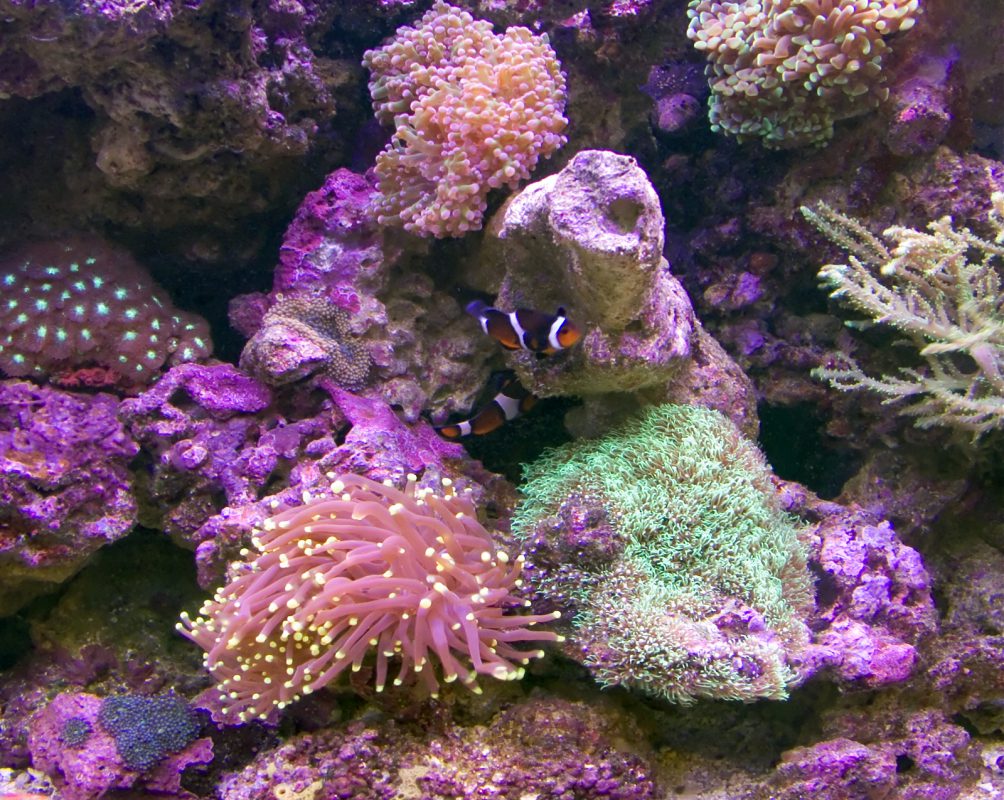Probably the most significant development to happen in the aquatics industry is the onward rise in popularity of marine fishkeeping. There are several factors that lie at the heart of this; improvements in marine aquarium life support technology, the availability of live rock, (see sidebar), an increasing number of marine species being captive bred and not least, a certain Disney film about a little clownfish…
Compared to freshwater species, marine fish are undoubtedly harder to keep. Their water quality requirements are exact and even slight deviations from the precise physical and chemical conditions found in the tropical seas will lead to the fish becoming very poorly. Many marine tanks contain delicate invertebrates such as soft corals, anemones, tubeworms, shrimps or starfish and these creatures are the most demanding aquatic organisms of all. Successfully keeping these in an aquarium depends on provision of consistently perfect seawater quality.
What is seawater?

The oceans cover 71 percent of the Earth’s surface
and contain 97 percent of the Earth’s water
So before we look at planning and establishing your marine aquarium, we should first consider what makes seawater so unique and how we mimic these conditions in the aquarium for these demanding marine species. Over 97% of global water is found in the sea and the oceans cover 71% of our planet, due to billions of years of land erosion, volcanic eruptions and other destructive forces, a considerable reserve of dissolved minerals have built up in the sea. In fact, crudely speaking, if you where to boil 1 litre of seawater, you would be left with around 35 grams of mineral salts. Thus to keep marine fishes, we must clearly add salts into freshwater to mimic the saline conditions of the fishes natural habitat.
Getting the exact amount of salt into the water is utterly crucial, whilst fishes can tolerate a salinity (salt level), slightly lower than full strength seawater; (in fact this can be a useful tonic for poorly marine fishes), all invertebrates such as corals, shrimps etc are utterly intolerant of anything other than full strength seawater.
So before water can be added to the marine tank, it must first have the correct amount of salt added. Then we need to test the salt level in the seawater to ensure we have put in the correct amount, regular testing of salinity in the aquarium is also crucial as pure water constantly evaporates which will concentrate salts left behind. The simplest way of testing salinity is to use a hydrometer, this measures the density (as specific gravity) of the seawater sample, which rises as more salts are added. Different hydrometers work in different ways and it is important to follow the manufacturer’s instructions closely. There are numerous other methods of testing the salt level.
Marine Aquarium: Planning for success

These require a large space to thrive and are not recommended in a tank under 450lt
When planning your new marine aquarium, one of the first decisions to make is the size of tank you are going to have. The old adage of the bigger the better is very true for marine fish systems. The greater the volume of water the more stable the water body is, and also you’ll be able to keep a higher biomass of lovely marine livestock. Available space and budget should be the restrictions on tank size, literally go for the largest tank you can afford or fit in the designated safe space in your home. There is an increasing popularity for so called ‘nano’ tanks, small aquaria of 50 litres or less. While these ‘bonsai-aquaria’ may seem an appealing, they are very demanding due to the inherent instability of such as small body of water. Nano tanks are best left to marine fish keepers with considerable experience and a penchant for miniaturisation!
The keystone of most marine aquaria is the protein skimmer, whilst filters, heaters, lighting etc will perform a function familiar to most who have kept freshwater species, the skimmer can only be found in seawater systems. The units passes billions of tiny bubbles up a column, down which seawater is circulated. The bubbles strip out dissolved organic wastes which collect in the frothing collection cup. Less dissolved muck in the water means a less polluted tank – these units are utterly crucial on all beginners marine tanks. Only once an aquarist has had many years of experience will they consider risking the benefits of not having a protein skimmer, debate rages among connoisseurs of the hobby on the impact of skimmers of plankton populations in the tank; all would agree for the beginner a skimmer is a non-negotiable essential.
What type of aquarium you have will also influence your choice of livestock for the tank. Fish only systems are the simplest way to get started with some of the slightly more forgiving marine fish, however, many of the fish ideal for this sort of tank can grow very large, (thus requiring a huge tank), and many are obligate carnivores, (requiring efficient filtration). Most marine fishkeepers today want to keep a ‘reef’ tank a balanced ecosystem built around liverock (see sidebar), with numerous mobile and sessile invertebrates and a small stock of carefully selected fish – chosen for their compatibility with the inverts.
Once you have selected your tank, planned your livestock, read a good book, poured over countless websites and confusing forums and sought the advice of every expert who will lend you their ear, you are ready to get started!
Installing and establishing your marine tank:

Synchiropus splendidus or Mandarin fish have very specific feeding habits, often only eating live amphipods and copepods and may not make the best fish for a beginner.
Unlike many other fish they have a layer of slime instead of scales that protects them from disease and predators.
When you have got your one box marine aquarium home, or unloaded the countless boxes of separate equipment, the tank must be set up dry. Follow manufacturer’s instructions closely here, again the one box solution offers the advantage of simplicity at this confusing stage.
With the tank in place and the equipment all ready to go it’s time to fill the tank with water. Tap water contains nitrates and numerous other trace chemicals that can cause chronic problems in reef tanks, so the majority of marine fishkeepers use water purified through a Reverse Osmosis (RO) unit. RO water is available at many aquatic stores and some have even begun selling seawater.
The correct amount of salt must then be added to the water and then left to fully dissolve for at least 2 days, to make this as easy as possible look for
Tetra Marine SeaSalt at your local aquatic store. Check the salinity is at the correct level then add the liverock. After a further week during which time you check water quality, ensure you are happy with the aquascape etc, you are ready to add the first fish. Follow the advice of your local aquatic store staff closely, especially regarding selection of fish and livestock for different stages of the establishment process. These folks will be experienced in guiding customers through setting up a new marine tank. It pays to stick to one store, especially in the early days of your tank so that the staff will know your tank and what livestock you have in it – this will greatly aid them in suggesting new purchases as the tank establishes.
After one or two small hardy fish are added, the tank begins to mature. The liverock massively speeds up this process and some bacterial preparations can also help. Ammonia and nitrite levels must be monitored closely at this stage, in addition to regular checking that the pH has remained at 8.2, the KH is above 4°dH, nitrates below 50 mgl/L and temperature at a stable 24°C. Monitoring water conditions during this early phase is essential to the long term health of your tank and to assist Tetra has a range of water testing kits that are readily available from your local aquatics store. Some fishkeepers prefer to mature the tank without adding fish at this delicate stage, your fish store staff will be able to advise on the so-called fishless cycling.
Feed your marine fish sparingly at this early stage, but a 2 or 3 small meals a day are likely to be required by many constantly browsing marine fish. Base their diet on a quality complete flake or pellet food, these will have been created to meet the dietary needs of most common marine aquarium fishes. Offer numerous other frozen treats to provide essential diversity of food for the array of fishes an inverts in your tank. Once the tank matures feed rates can be slowly increased ideally in frequency rather than portion size. Again your local fish store will be a useful source of advice and guidance.
In addition to establishing the tank, an area and vessel to mix, heat and aerate new salt water for water changes will be needed; seasalts take 24 hours to fully dissolve in RO wate. Never add instantly mixed seasalt into your marine aquarium. Finally, don’t forget that water lost from the tank by evaporation MUST be replaced with RO water and not with seawater as only pure water evaporates, leaving the salts behind in the tank.
What is liverock?

Amphiprion ocellaris better known as Clownfish are hardy and healthy in a well maintained aquarium, making them a great choice for a beginner marine aquarist
Liverock is the substrate on which a successful reef tank is built, quite simply it is porous rocks that have been taken from the sea! Seems fairly straight forward and to the new marine fishkeeper it’s just rocks; to anyone who has kept a reef tank before, liverock is one of the most exciting parts of marine fishkeeping! As the rocks have come from the sea they are packed with marine bacteria, beneficial algae spores, microscopic invertebrate larvae and numerous other currently invisible life forms. Addition of liverock to a new marine tank instantly seeds a barren desert with natural marine flora and fauna. Do not compromise on live rock! A reef tank is set up to succeed with a good stack of liverock as the substrate and you would be amazed at the plants and creatures that appear from nowhere after a month or so, with new discoveries to be made for many years after.

